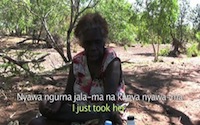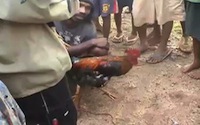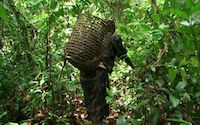The Tapiete’s original territory is the Gran Chaco region of Bolivia, Paraguay, and Argentina. With the exception of the Tapiete community of the city of Tartagal, the Tapiete of Bolivia, Paraguay, and the community of Curvita in Argentina are settled in a typical Chaco region. This region is characteristically dry, with a xerophytic vegetation and low bush. The rainy season is from December to March. Trees such as the algarrobo (Prosopis juliflora), mistol (Zyzyplus mistol), chañar (Geoffreae decorticans) provide fruits which are collected by the Tapiete. The chaguar (Bromelia serra) is a plant of many uses: the fibrous leaves are used to make ropes, nets, hammocks, and bags, the stem is roasted and eaten. The fauna includes peccari, tapir, dear, and domestic animals such as chickens, goats, and pigs. The Tapiete who live in the proximity of the Pilcomayo river, fish during 6 months of the year, and this constitutes an important source of food and income.







